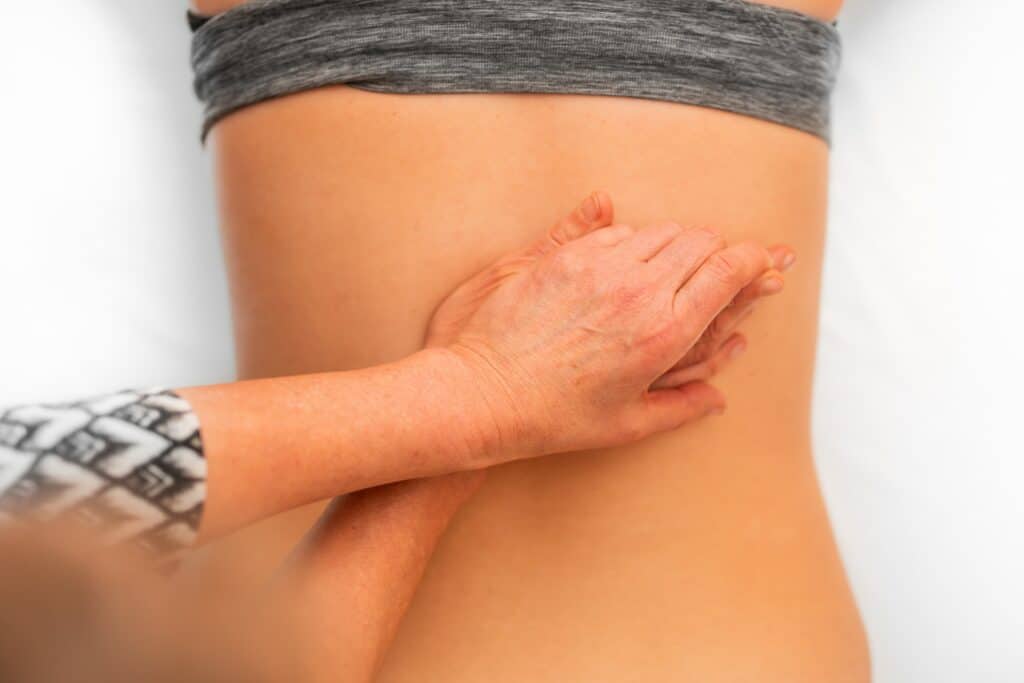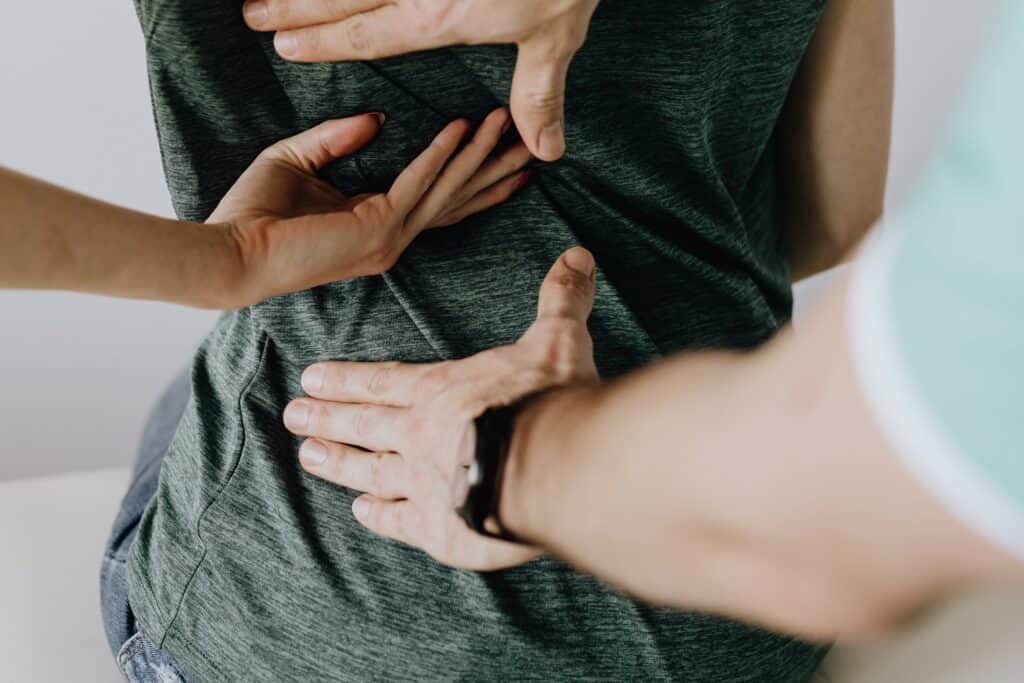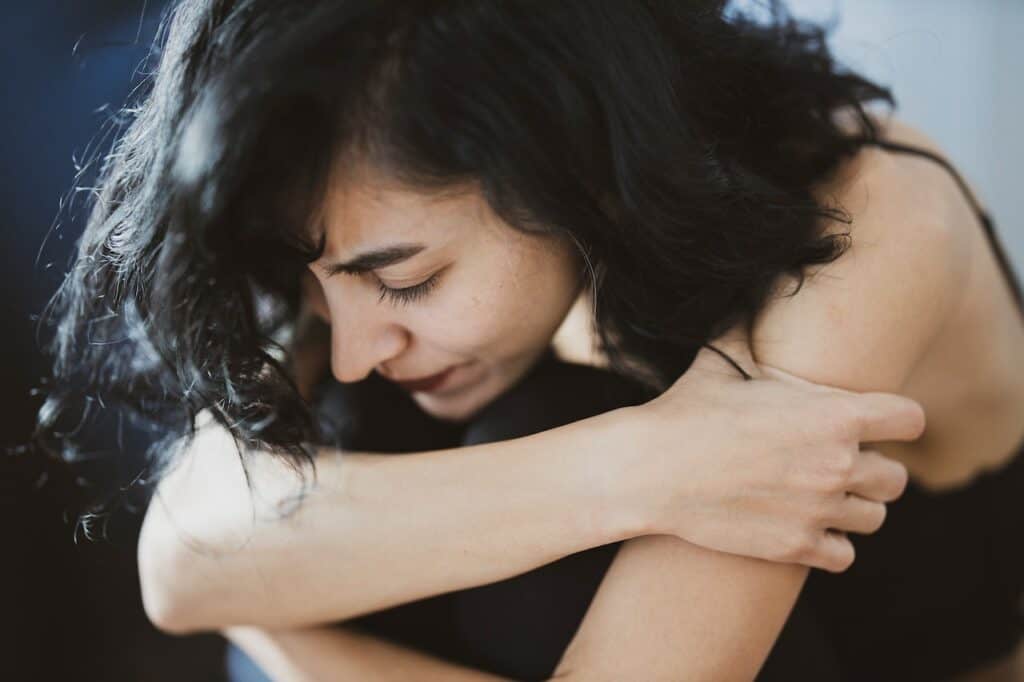Hip pain after C-section is a common issue that many women face during postpartum recovery. While C-sections are a safe and effective way to deliver a baby, they can cause discomfort and pain in the hip area due to the incision and strain on the pelvic muscles during the procedure. This pain can be debilitating and may impact a woman’s ability to care for her newborn.
Understanding Hip Pain After C-Section Hip pain after C-section can be caused by a variety of factors, including the incision site, pelvic muscle strain, and hormonal changes. Women who have had a C-section may also experience pain in other areas of the body, such as the back and abdomen. It is important to understand the causes and symptoms of hip pain after C-section in order to properly manage and treat the condition.
Causes of Hip Pain After Childbirth There are several factors that can contribute to hip pain after childbirth, including the physical strain of childbirth, hormonal changes, and the use of forceps or vacuum extraction during delivery. In addition, women who have had a C-section may experience pain and discomfort due to the incision site and the strain on the pelvic muscles during the procedure. Understanding the underlying causes of hip pain after childbirth is crucial in order to effectively manage and treat the condition.
Key Takeaways
- Hip pain after C-section is a common issue that can impact a woman’s ability to care for her newborn.
- The causes of hip pain after childbirth can be physical, hormonal, or related to the delivery method.
- Proper management and treatment of hip pain after C-section requires an understanding of the underlying causes.
Understanding Hip Pain After C-Section
Hip pain after a C-section is a common experience for many women. The discomfort can range from mild to severe and can last for weeks or even months after delivery. It is important to understand the causes of hip pain after a C-section and how to manage it effectively.

During pregnancy, a woman’s body undergoes significant changes to accommodate the growing fetus. These changes can affect the hips and pelvic joints, which can lead to discomfort during childbirth and after a C-section. Scar tissue from the surgery can also contribute to hip pain and stiffness.
It is important to consult with a doctor if you experience hip pain after a C-section. They can perform a physical exam and recommend treatments such as pain medication, physical therapy, or massage. In some cases, surgery may be necessary to address underlying issues such as nerve damage or joint problems.
To manage hip pain after a C-section, there are several things you can do at home. These include:
- Resting and avoiding strenuous activities
- Applying heat or ice to the affected area
- Doing gentle exercises to improve flexibility and strength
- Using a supportive pillow or cushion when sitting or lying down
- Wearing comfortable, supportive shoes
In conclusion, hip pain after a C-section is a common experience for many women. It is important to understand the causes of hip pain and how to manage it effectively. By consulting with a doctor and taking steps to manage the pain at home, women can recover from a C-section with minimal discomfort.
Causes of Hip Pain After Childbirth
Hip pain after childbirth is a common complaint among women who have undergone a cesarean section. The pain can be caused by a variety of factors, including pelvic trauma, misalignment of the pelvis, hormonal changes, and nerve compression. In some cases, the pain may be caused by complications such as endometriosis, scar tissue adhesions, or fractures.
One of the primary causes of hip pain after childbirth is trauma to the pelvic area during delivery. This trauma can cause misalignment of the pelvis, which can result in pain and discomfort in the hips. Hormonal changes that occur during pregnancy and childbirth can also contribute to hip pain. These changes can cause fluid retention, weight gain, and other physical changes that can put added pressure on the hips and pelvis.
Another common cause of hip pain after childbirth is nerve compression. This occurs when nerves in the pelvis become compressed or pinched, leading to pain and discomfort in the hips. Pelvic girdle pain (PGP) is another condition that can cause hip pain after childbirth. PGP is a condition that affects the pelvic joints and can cause pain and discomfort in the hips, pelvis, and lower back.
In some cases, hip pain after childbirth may be caused by complications such as endometriosis or scar tissue adhesions. These conditions can cause pain and discomfort in the hips and pelvic area, and may require medical treatment to alleviate symptoms. Fractures and dislocations can also cause hip pain after childbirth, particularly if the woman has undergone a difficult delivery or has pre-existing bone conditions.
Overall, there are many potential causes of hip pain after childbirth, and it is important for women to seek medical attention if they experience persistent or severe pain. Treatment options may include physical therapy, pain management, and in some cases, surgery. By working with their healthcare providers, women can find relief from hip pain and enjoy a comfortable, healthy postpartum recovery.
Symptoms to Watch Out For
Hip pain after a C-section is a common occurrence, and it is important to know the symptoms to watch out for to ensure proper treatment. The following symptoms may indicate that you are experiencing hip pain after a C-section:

- Burning hip pain
- Radiating pain
- Pelvic pain
- Weakness in the hip area
- Numbness or tingling in the hip area
- Bruising around the hip area
- Dislocation of the hip
- Lower back pain
- Long-term pain in the right hip
If you are experiencing any of these symptoms, it is important to consult with your healthcare provider to determine the cause of your hip pain. In some cases, hip pain may be caused by a dislocation of the hip joint, which requires immediate medical attention.
Postpartum hip pain may also occur due to the changes in the body during pregnancy and childbirth. The pelvic area may become stretched and weakened, which can lead to long-term pain in the hip area. It is important to seek medical attention if you are experiencing hip pain after a C-section to ensure proper treatment and prevent long-term suffering.
In summary, hip pain after a C-section can be caused by a variety of factors, and it is important to be aware of the symptoms to watch out for. If you are experiencing any of these symptoms, seek medical attention to determine the cause of your hip pain and receive proper treatment.
Hip Pain Related Conditions
Hip pain after a c-section can be caused by a variety of conditions. Some of the most common conditions that can cause hip pain are arthritis, sciatic nerve compression, piriformis syndrome, hip dysplasia, bursitis, and hyperthyroidism.

Arthritis is a condition that causes inflammation in the joints, which can cause hip pain. This condition can be caused by wear and tear, injury, or an autoimmune disorder. Symptoms of arthritis include pain, stiffness, and swelling in the joints.
Sciatic nerve compression is another common cause of hip pain. This condition occurs when the sciatic nerve, which runs from the lower back down to the legs, is compressed or pinched. Symptoms of sciatic nerve compression include pain, numbness, and tingling in the legs.
Piriformis syndrome is a condition that occurs when the piriformis muscle, which is located in the buttocks, becomes tight or inflamed. This can cause pain in the hip, buttocks, and legs. Symptoms of piriformis syndrome include pain, numbness, and tingling in the legs.
Hip dysplasia is a condition that occurs when the hip joint is not formed properly. This can cause pain and discomfort in the hip joint, especially during movement. Symptoms of hip dysplasia include pain, stiffness, and a limited range of motion in the hip joint.
Bursitis is a condition that occurs when the bursae, which are small fluid-filled sacs that cushion the joints, become inflamed. This can cause pain and discomfort in the hip joint. Symptoms of bursitis include pain, swelling, and tenderness in the hip joint.
Hyperthyroidism is a condition that occurs when the thyroid gland produces too much thyroid hormone. This can cause a variety of symptoms, including hip pain. Symptoms of hyperthyroidism include weight loss, fatigue, and muscle weakness.
In conclusion, hip pain after a c-section can be caused by a variety of conditions. It is important to seek medical attention if you are experiencing persistent hip pain, as early diagnosis and treatment can help prevent further complications.
Medical Intervention and Treatment
When experiencing hip pain after a C-section, seeking medical intervention and treatment is crucial. There are several options available, depending on the severity of the pain and the underlying cause.

A doctor may recommend pain medication to manage the discomfort. Over-the-counter pain relievers such as acetaminophen and ibuprofen may be sufficient for mild pain. For more severe pain, prescription medication may be necessary.
In some cases, surgery may be required to address the underlying issue causing the hip pain. This can include repairing a hernia or addressing nerve damage.
A specialist, such as an orthopedic surgeon or physical therapist, may be consulted to provide a more targeted treatment plan. This can include exercises and stretches to improve hip mobility and strengthen the muscles surrounding the hip joint.
Injections, such as corticosteroid injections, may be used to provide pain relief and reduce inflammation. Additionally, transcutaneous electrical nerve stimulation (TENS) may be used to provide pain relief by delivering electrical impulses to the affected area.
Occupational therapy may also be recommended to help individuals learn how to perform daily activities with less pain and discomfort. The use of a pelvic brace or binder may also be recommended to provide support and reduce pressure on the hip joint.
Overall, seeking medical intervention and treatment is crucial for managing hip pain after a C-section. With the right approach, individuals can find relief and improve their quality of life.
Physical Therapy and Exercises
Physical therapy and exercises can help alleviate hip pain after a C-section. A physical therapist can create a customized exercise plan that targets the specific areas causing pain. This plan may involve stretching exercises, range of motion exercises, and strengthening exercises.
Stretching exercises can help increase flexibility and reduce tension in the muscles around the hip joint. A physical therapist may recommend stretching exercises such as hamstring stretches, quadriceps stretches, and hip flexor stretches.
Range of motion exercises can help improve mobility and reduce stiffness in the hip joint. These exercises may include leg lifts, hip rotations, and ankle pumps.
Strengthening exercises can help improve muscle function and support the hip joint. A physical therapist may recommend exercises such as bridges, squats, and lunges.
In addition to physical therapy, yoga can also be helpful in reducing hip pain. Certain yoga poses can help stretch and strengthen the muscles around the hip joint, improving flexibility and reducing pain.
Kegel exercises, which involve contracting and relaxing the muscles of the pelvic floor, can also be beneficial in reducing hip pain. These exercises can help improve muscle function and support the hip joint.
It is important to note that rest is also an important component of recovery. It is recommended to avoid high-impact exercises and activities that may exacerbate hip pain. It is important to consult with a healthcare provider before beginning any exercise program.
Postpartum Recovery and Pain Management
After a C-section, the postpartum period can be a challenging time for new mothers. It is essential to take care of oneself and allow the body to heal properly. Recovery can take several weeks, and fatigue is common during this period. Rest is crucial, and new mothers should spend as much time as possible in bed to allow the body to recover.

Pain relief is essential during this period, and new mothers can take pain medication as prescribed by their doctor. It is also important to manage pain through other methods such as hot or cold compresses, massage, and relaxation techniques.
Pelvic floor muscles can become weakened during pregnancy and childbirth, leading to discomfort and pain. New mothers can perform exercises to strengthen these muscles and alleviate pain. Scar tissue massage and release can also help reduce discomfort and pain in the abdomen.
Maintaining a healthy weight is crucial during the postpartum period, as excess weight can put additional strain on the knees and ankles. Bed rest is necessary during this period, but new mothers should also engage in light exercise such as walking to improve circulation and promote healing.
In summary, postpartum recovery after a C-section requires patience and care. Pain management, pelvic floor muscle exercises, scar tissue massage, and maintaining a healthy weight are all essential components of recovery. With proper care, new mothers can recover fully and enjoy the joys of motherhood.
Frequently Asked Questions
What helps with hip pain after a C-section?
Hip pain after a C-section can be managed with over-the-counter pain relievers such as acetaminophen or ibuprofen. Applying heat or cold compresses to the affected area can also help alleviate pain. Additionally, getting enough rest and avoiding strenuous activities can help with recovery.
Why does my hip hurt months after a C-section?
Hip pain after a C-section can be caused by a variety of factors, including the strain on the hip muscles during delivery, changes in posture due to carrying a newborn, or scar tissue formation. It is important to consult with a healthcare provider to determine the underlying cause of the pain.
How long does postpartum hip pain typically last?
Postpartum hip pain can last for several weeks to months after delivery. However, the duration of the pain can vary depending on the individual and the severity of the pain. It is important to seek medical attention if the pain persists or worsens over time.
What exercises can help with postpartum hip pain?
Low-impact exercises such as walking, swimming, and yoga can help with postpartum hip pain. Strengthening exercises for the hip muscles can also be beneficial. It is important to consult with a healthcare provider before starting any exercise regimen.
What are some treatments for postpartum hip pain?
In addition to over-the-counter pain relievers and exercise, physical therapy and chiropractic care can also be helpful in treating postpartum hip pain. In severe cases, surgery may be necessary.
Is hip dysplasia common after childbirth?
Hip dysplasia is a rare but possible complication after childbirth. It occurs when the hip joint is not properly formed, leading to instability and potential dislocation. It is important to seek medical attention if there are any concerns about hip dysplasia.

Iesha is a loving mother of 2 beautiful children. She’s an active parent who enjoys indoor and outdoor adventures with her family. Her mission is to share practical and realistic parenting advice to help the parenting community becoming stronger.
